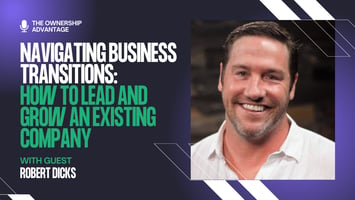As business owners, one of the primary goals is to maximize profitability and ensure long-term...
Aligning Dreams with the Business Blueprint: A Pathway to Sustainable Success
Unlock the synergy between personal aspirations and business strategies to fuel growth and resilience.
In the realm of entrepreneurship, the hustle can often overshadow the roots of why many dive into business ownership. The journey, while fruitful, demands a careful balance of chasing dreams and executing business strategies. Kay, the insightful co-host, joins Tanner O'Brien in their latest discussion on the ActionCOACH Central Texas YouTube channel to delve into how aligning personal dreams with business plans can pave the way for achieving not just business success but personal fulfillment as well.
Understanding the Intersection of Dreams and Business Plans
The conversation begins with Tanner discussing the core motivation behind his work: creating a life full of desired experiences. He poses an essential question, “How does the business and the tasks of today contribute to getting closer to that goal?” Kay echoes this sentiment, emphasizing that aligning dreams with business plans is pivotal in remaining on the path to success. Often, the disconnect between the two can lead entrepreneurs astray, making it crucial to tie personal aspirations directly to business objectives.
The Importance of Passion and Purpose
Kay and Tanner further explore how passion and purpose act as foundational elements when starting a business. Most entrepreneurs begin with a dream or a passionate idea. As Kay rightly points out, maintaining a clear connection to these roots provides enormous incentive during challenging times. It serves as a reminder of why the business was started in the first place, sustaining motivation and discipline, particularly through the lows that inevitably occur.
Translating Dreams into Tangible Goals
To effectively bridge dreams with business plans, Tanner introduces the concept of articulating specific, tangible goals. The goal-setting process requires entrepreneurs to vividly outline their ideal life: what it consists of, and how their business can help fulfill those elements. From defining relationships to envisioning experiences, each aspect should be connected back to business operations.
This process might involve integrating business and personal goals, akin to what Tanner experiences with global conferences in the coaching world. These events allow for personal growth and exploration while serving business interests—a perfect example of how personal and business visions can interweave.
Implementing the DGLPA Framework
To transform dreams into actionable business strategies, Tanner proposes the DGLPA framework: Dreams, Goals, Learn, Plan, Act. This powerful tool assists entrepreneurs in breaking down their aspirations into executable segments:
1. Dreams: Initiate by identifying what you truly desire, no matter how grand or seemingly unachievable. This step is where creativity knows no bounds.
2. Goals: Transition from dreams to setting concrete, numerical goals. Assign financial and time resources to your aspirations, transforming them from dreams into achievable targets.
3. Learn: Acknowledge the gaps in your knowledge and skills by determining what you need to learn to reach your goals. This step ensures continuous growth and preparedness to tackle challenges.
4. Plan: Develop a strategic approach that includes daily actions and sustainable business practices aligned with your set goals.
5. Act: Implement your plans with consistent action. This daily commitment ensures the business remains on the trajectory toward fulfilling both professional and personal objectives.
Concluding Thoughts: A Call to Reflect and Engage
Kay highlights the value of reverse engineering goals as a mechanism to stay unfrozen during times of uncertainty. By dissecting how each daily action propels the business toward dream fulfillment, entrepreneurs can remain agile, adjusting their pace as needed.
Tanner invites viewers and listeners to engage with this framework, encouraging reflection on which part of the process—dreams, goals, learning, planning, or action—resonates most with their entrepreneurial journey. Feedback in the comments, he hopes, will spur further exploration of these concepts, channeling community insights into future discussions.
In conclusion, aligning dreams with business plans is not merely an exercise; it is a foundational practice that empowers entrepreneurs to persist through adversity, remain focused on their original mission, and achieve a harmonious balance between professional success and personal fulfillment.


